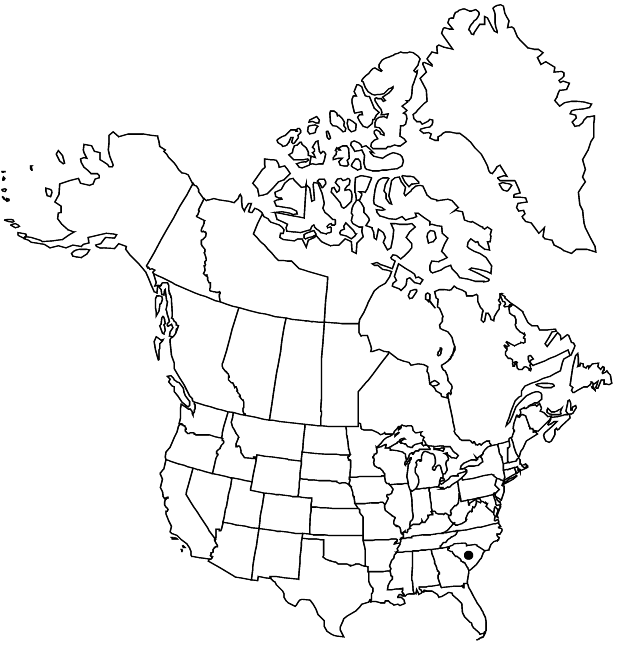Rhododendron eastmanii
Novon 9: 377, figs. 1, 2. 1999 ,.
Shrubs or trees, to 5 m, not rhizomatous. Stems: bark smooth to vertically furrowed, shredding; twigs unicellular and multicellular eglandular-hairy and unicellular-hairy. Leaves deciduous; petiole densely unicellular-hairy and sparsely to densely multicellular eglandular-hairy; blade ovate or obovate to elliptic, 4.3–7.1 × 1.8–2.9 cm, membranous, margins entire, plane, ciliate, multicellular eglandular-hairy, apex acute to obtuse, mucronate, surfaces sparsely scattered, multicellular eglandular-hairy, abaxial surface moderately to densely unicellular-hairy and multicellular eglandular-hairy, midvein densely unicellular-hairy and multicellular eglandular-hairy, secondary veins sometimes multicellular eglandular-hairy, adaxial surface sparsely to densely unicellular-hairy, midvein densely unicellular-hairy. Floral bud scales glabrous abaxially, margins unicellular-ciliate near apex, glandular along proximal 2/3. Inflorescences 5–9 flowered; bracts similar to bud scales. Pedicels 5–11 mm, densely unicellular-hairy and sparsely to densely multicellular eglandular-hairy, sometimes multicellular glandular-hairy. Flowers opening after leaves have expanded, erect to horizontal, strongly fragrant (fresh during mid day); calyx lobes 0.5–1 mm (often varying in length on same flower), margins setose, multicellular eglandular-hairy, abaxial surface sparsely to densely unicellular-hairy and multicellular eglandular-hairy, sometimes sparsely multicellular, weakly glandular-hairy; corolla white, lobes pink tinged on newly opened flowers, with yellow to orange blotch on upper lobe (style white), funnelform, 24–50 mm, outer surface densely unicellular-hairy and sparsely to densely multicellular stipitate-glandular-hairy (glands usually weakly developed), inner surface densely unicellular-hairy, petals connate, upper lobe 9–17 mm, lateral lobes 11–25 mm, tube gradually expanding into lobes, 13–25 mm (equaling or much longer than lobes); stamens 5, exserted, ± unequal, 45–67 mm. Capsules borne on erect pedicels, 12–19 × 4–8 mm, sparsely to densely unicellular-hairy and multicellular eglandular-hairy. Seeds without distinct tails, flattened portion of testa well developed at each end; testa expanded, dorsiventrally flattened, ± loose.
Phenology: Flowering late spring–early summer.
Habitat: Forests on north-facing slopes near limestone
Elevation: 30-200 m
Distribution

S.C.
Discussion
Older collections of Rhododendron eastmanii were typically referred to R. alabamense, which flowers early in the spring before the leaves have expanded, and has inflorescence bud scales are unicellular-ciliate; in R. eastmanii the bud scale margins are glandular.
Selected References
None.